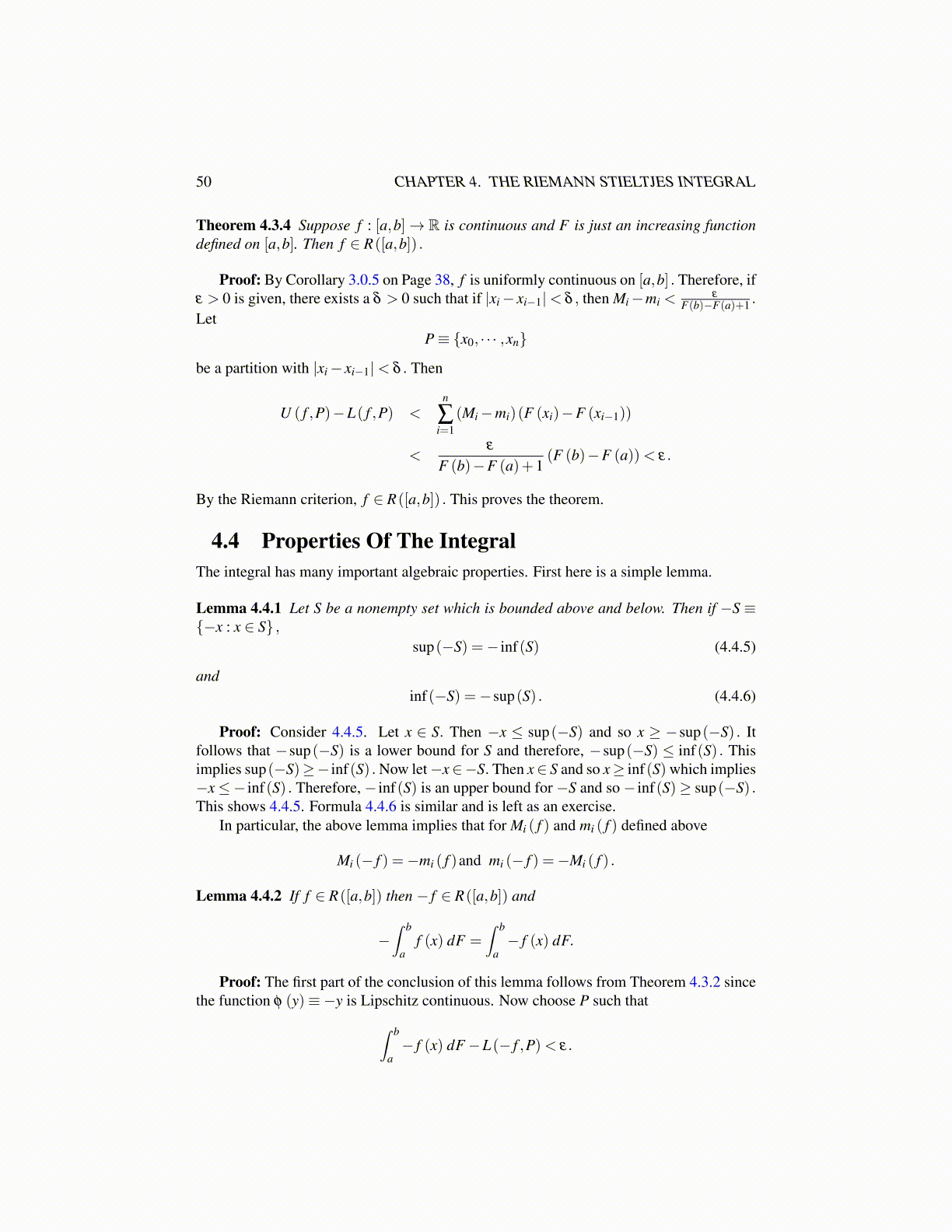
50 CHAPTER 4. THE RIEMANN STIELTJES INTEGRAL
Theorem 4.3.4 Suppose f : [a,b]→ R is continuous and F is just an increasing functiondefined on [a,b]. Then f ∈ R([a,b]) .
Proof: By Corollary 3.0.5 on Page 38, f is uniformly continuous on [a,b] . Therefore, ifε > 0 is given, there exists a δ > 0 such that if |xi− xi−1|< δ , then Mi−mi <
ε
F(b)−F(a)+1 .
LetP≡ {x0, · · · ,xn}
be a partition with |xi− xi−1|< δ . Then
U ( f ,P)−L( f ,P) <n
∑i=1
(Mi−mi)(F (xi)−F (xi−1))
<ε
F (b)−F (a)+1(F (b)−F (a))< ε.
By the Riemann criterion, f ∈ R([a,b]) . This proves the theorem.
4.4 Properties Of The IntegralThe integral has many important algebraic properties. First here is a simple lemma.
Lemma 4.4.1 Let S be a nonempty set which is bounded above and below. Then if −S ≡{−x : x ∈ S} ,
sup(−S) =− inf(S) (4.4.5)
andinf(−S) =−sup(S) . (4.4.6)
Proof: Consider 4.4.5. Let x ∈ S. Then −x ≤ sup(−S) and so x ≥ −sup(−S) . Itfollows that −sup(−S) is a lower bound for S and therefore, −sup(−S) ≤ inf(S) . Thisimplies sup(−S)≥− inf(S) . Now let−x∈−S. Then x∈ S and so x≥ inf(S) which implies−x≤− inf(S) . Therefore, − inf(S) is an upper bound for −S and so − inf(S)≥ sup(−S) .This shows 4.4.5. Formula 4.4.6 is similar and is left as an exercise.
In particular, the above lemma implies that for Mi ( f ) and mi ( f ) defined above
Mi (− f ) =−mi ( f )and mi (− f ) =−Mi ( f ) .
Lemma 4.4.2 If f ∈ R([a,b]) then − f ∈ R([a,b]) and
−∫ b
af (x) dF =
∫ b
a− f (x) dF.
Proof: The first part of the conclusion of this lemma follows from Theorem 4.3.2 sincethe function φ (y)≡−y is Lipschitz continuous. Now choose P such that∫ b
a− f (x) dF−L(− f ,P)< ε.